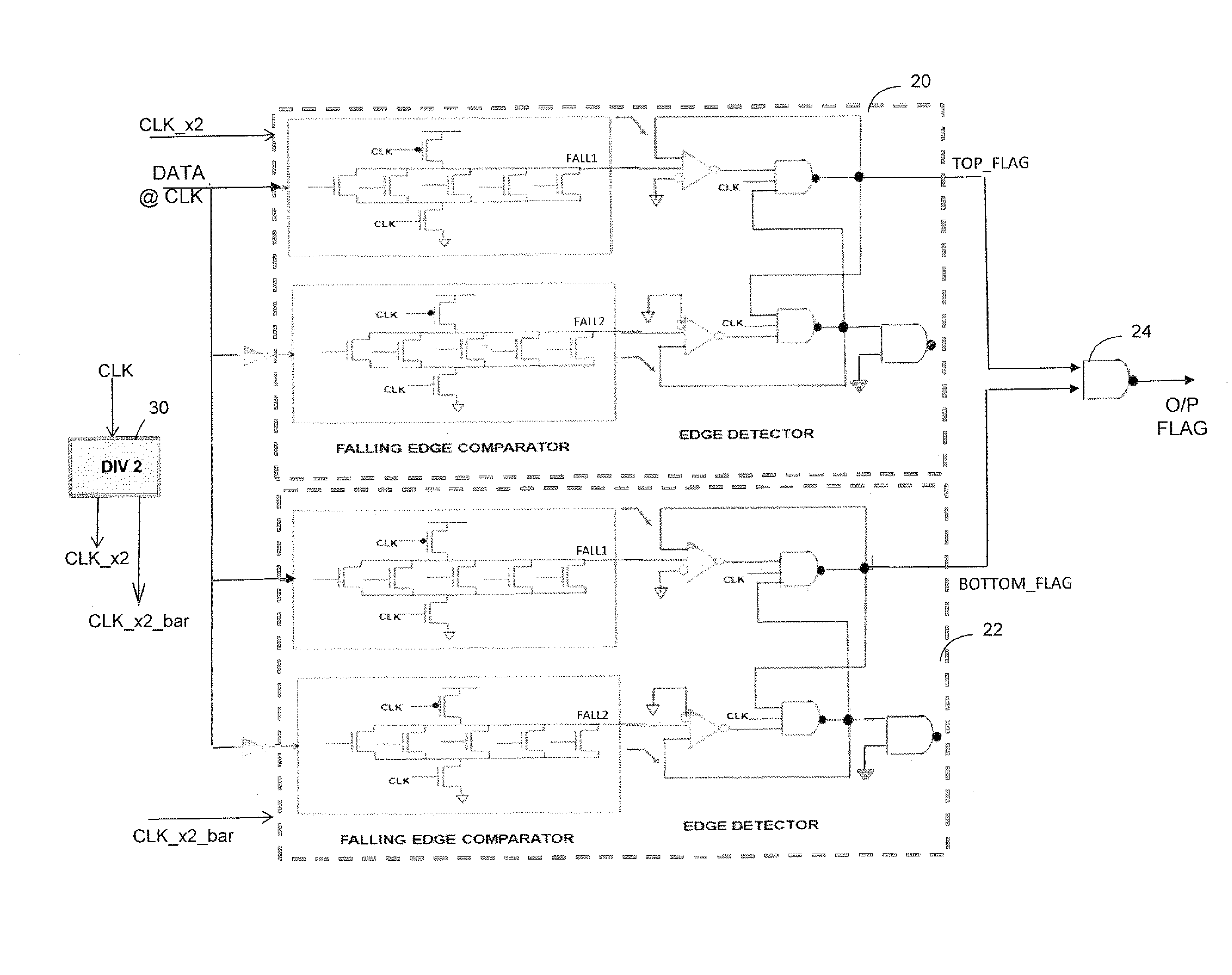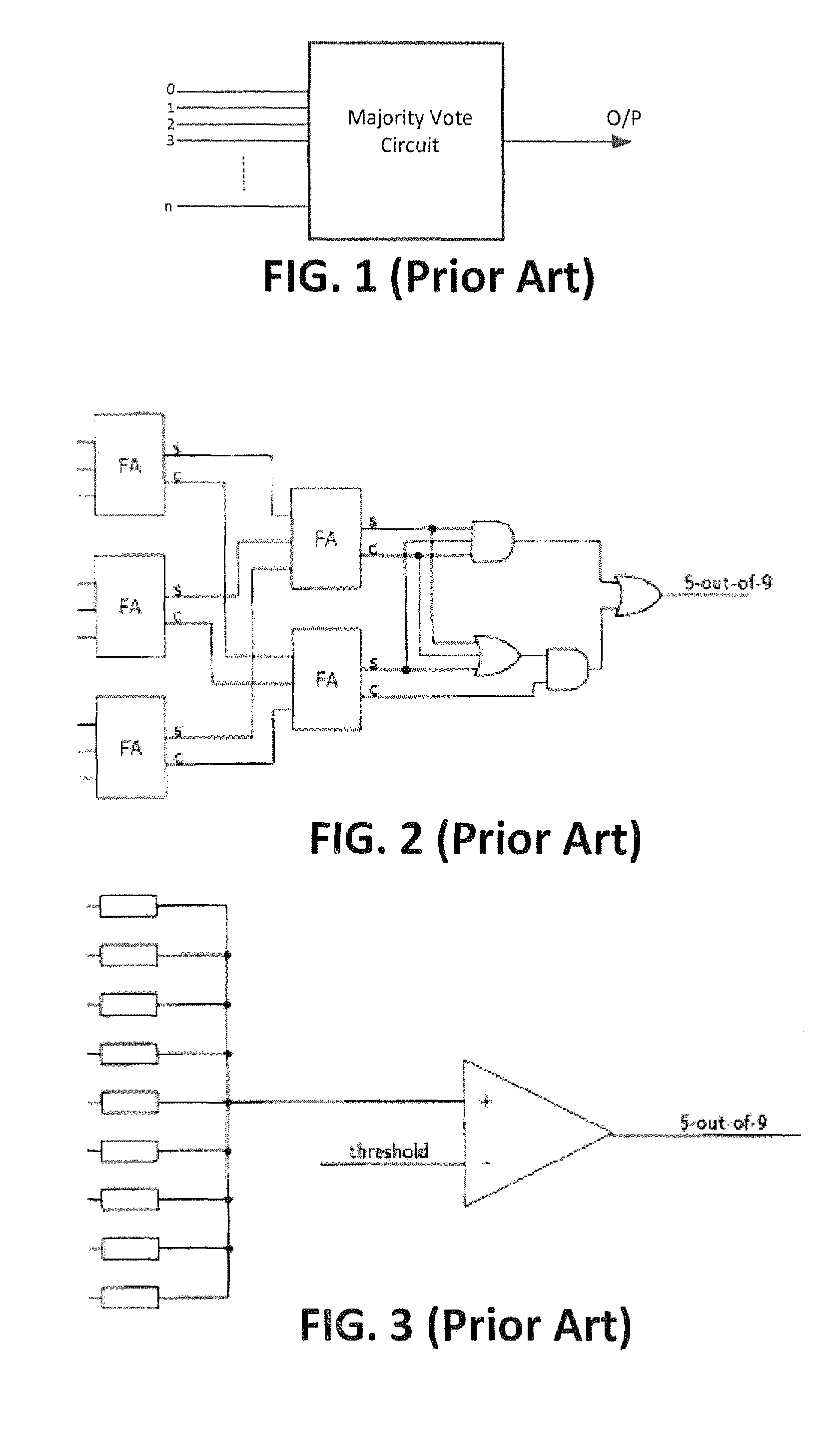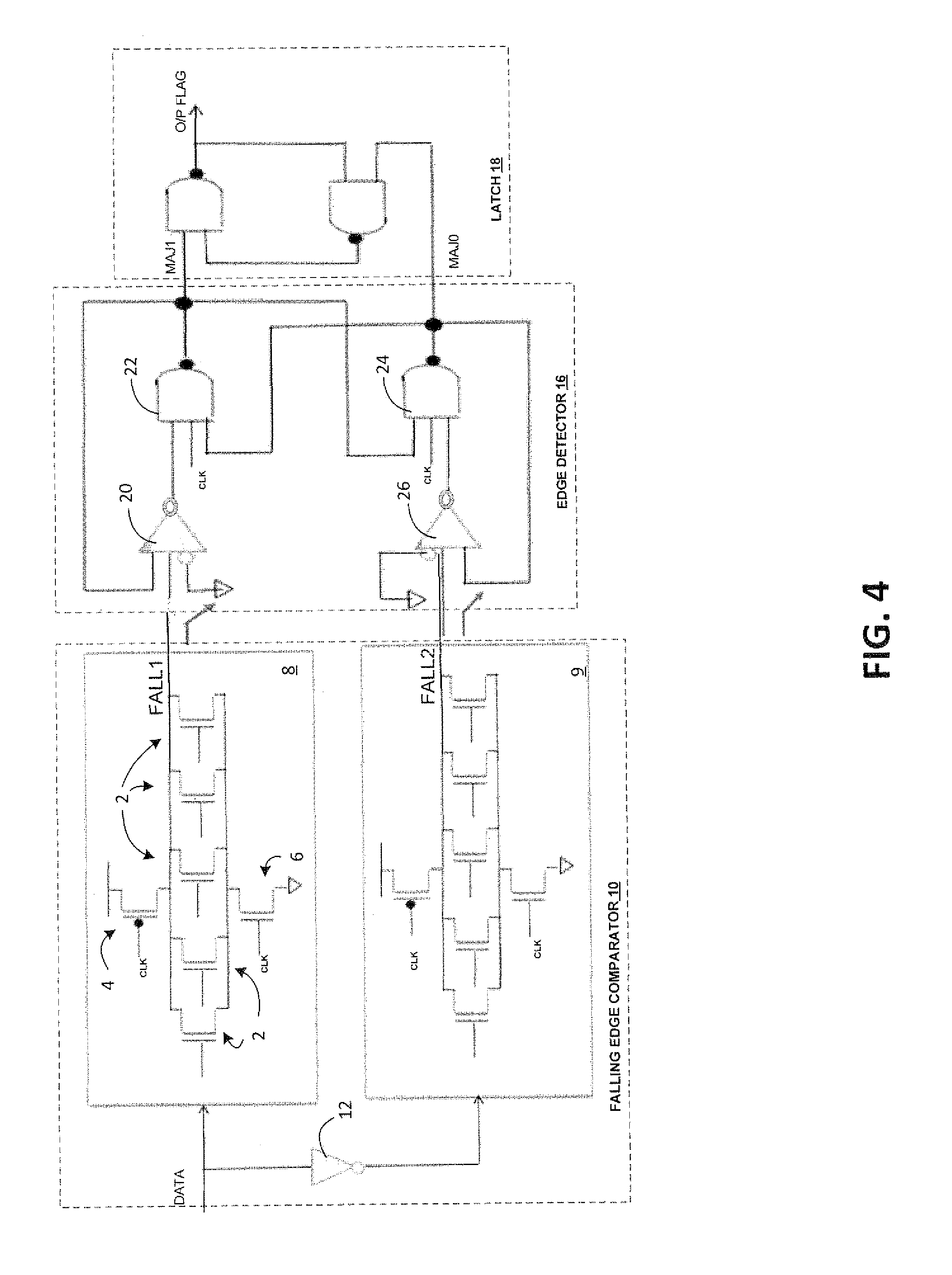Majority vote circuit
a circuit and circuit technology, applied in the field of majority vote circuits, can solve the problems of inability to generate output, general slowness of digital circuits, unsuitability of digital circuits for high-speed applications, etc., and achieve the effect of more accurate determination
- Summary
- Abstract
- Description
- Claims
- Application Information
AI Technical Summary
Benefits of technology
Problems solved by technology
Method used
Image
Examples
Embodiment Construction
[0027]FIG. 4 illustrates a majority vote circuit that includes a falling edge comparator 10 that has a precharge phase and an evaluation phase. The comparator 10 includes an upper block 8 formed by transistors 2 that are connected in parallel between a supply voltage (e.g. Vcc) and a common voltage (e.g. ground) with control transistors connected to alternately connect the transistors to the supply voltage and to the common voltage. In the example shown, the control transistors are a PMOS transistor 4 and an NMOS transistor 6, that are both controlled by the same clock signal (CLK) so that one is on while the other is off. When the clock signal is low, the PMOS transistor is turned on, and the supply voltage is connected to the upper terminal of the transistors thus precharging the line connecting the upper terminals of transistors 2 to the supply voltage (the NMOS transistor 6 is “off” during this time). This period, the low phase of the clock cycle, may be considered a precharge p...
PUM
 Login to View More
Login to View More Abstract
Description
Claims
Application Information
 Login to View More
Login to View More - R&D
- Intellectual Property
- Life Sciences
- Materials
- Tech Scout
- Unparalleled Data Quality
- Higher Quality Content
- 60% Fewer Hallucinations
Browse by: Latest US Patents, China's latest patents, Technical Efficacy Thesaurus, Application Domain, Technology Topic, Popular Technical Reports.
© 2025 PatSnap. All rights reserved.Legal|Privacy policy|Modern Slavery Act Transparency Statement|Sitemap|About US| Contact US: help@patsnap.com



